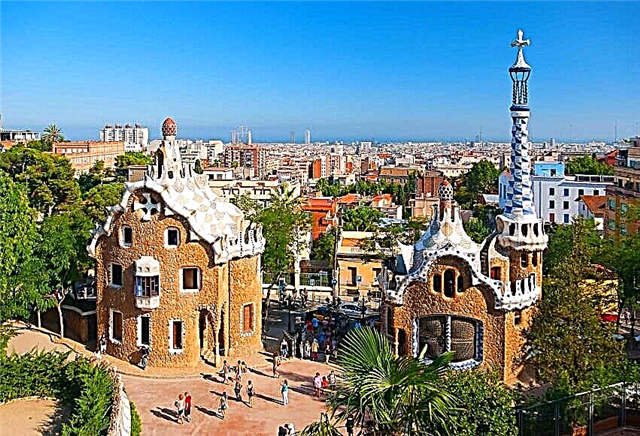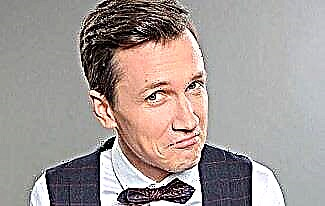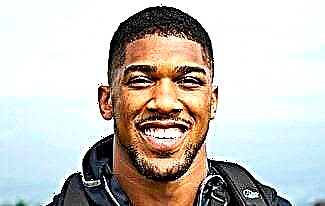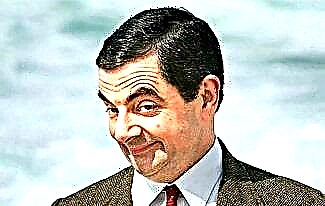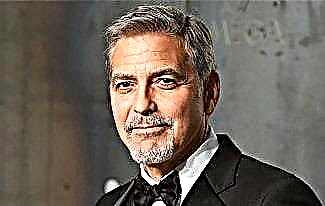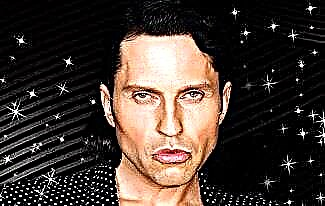Before starting a conversation about bodybuilding, as the physical development of the muscles of the human body, it is impossible to do without some clarification of this concept. Almost any athlete works on the development of their own muscles. Exceptions, such as chess players or sports poker masters, make up a vanishingly small percentage.
The vast majority of athletes develop their own muscles based on the purpose for which they are intended. Of course, the work is carried out in a complex manner, but there are always muscles of paramount importance, and auxiliary muscles. For example, footwork is very important in boxing, but kicks still bring success in this sport. There are a number of sports in which the specificity of repetitive movements allows you to sculpt the correct beautiful sports figure without the use of special techniques. These are gymnastics, swimming, tennis, and some other types. But in general, high-performance sports are characterized by systematic development of the body with an emphasis on the muscles that are key for this sport.
The conversation will go about bodybuilding as an art for the sake of art, when muscles develop for the purpose of demonstration, either to themselves in the mirror, or to the girls on the beach, or to the high jury at the bodybuilding championship. It is clear that this will also include options like "pump up for yourself" or "you need to clean your tummy."
Characteristically, bodybuilding ideologists and historians do not make such distinctions. They begin to talk about Milo of Croton, carrying a bull, and other athletes of ancient times. At the same time, the fact remains behind the scenes that both Milon and other representatives of ancient sports thought about the beauty of the figure in the last place, although the Greeks had a cult of the athletic body. The same Milon, according to estimates, with a height of 170 cm, weighed about 130 kg. The goal of the athletes involved in sports was to win the Olympic Games. Such a victory immediately not only brought glory and wealth to a person, but also lifted him up the steps of the social hierarchy. Roughly the same tradition existed until about the 1960s in the United States. Then, introducing a person before a public speech, it was definitely mentioned that he was an Olympic champion, medalist of the Olympic Games and even a member of the US Olympic team, regardless of the sport. With the hype of the Olympics program and the emergence of thousands of Olympians, this tradition disappeared. In ancient Greece, the Olympian could be elected to the highest posts. But not because of the beauty of the body, but because of the fighting spirit, prudence and courage, without which you cannot win the Olympics.

1. The history of bodybuilding can begin with Königsberg, where in 1867 a weak and sickly boy named Friedrich Müller was born. Either he naturally possessed an iron character, or his peers got it beyond measure, or both factors worked, but already in adolescence Frederick began to work on his own physical development and succeeded a lot in this. At first, he became an invincible wrestler in the circus. Then, when the rivals were over, he began to demonstrate unprecedented tricks. He did 200 push-ups from the floor in 4 minutes, squeezed a barbell weighing 122 kilograms with one hand, held a platform with an orchestra of 8 people on his chest, etc. In 1894, Friedrich Müller, performing under the pseudonym Evgeny Sandov (his mother was Russian), under the name Eugene Sandow went to the USA. There he not only performed with demonstration performances, but also advertised sports equipment, equipment and healthy food. Returning to Europe, Sandow settled in England, where he charmed King George V. In 1901, in London, under the patronage of the king, the world's first athletic build competition was held - the prototype of the current bodybuilding championships. One of the judges was the renowned writer Arthur Conan Doyle. Sandow promoted bodybuilding in different countries, having traveled around the globe for this, and also developed a system of exercise for soldiers of the British territorial defense. Died "Father of Bodybuilding" (as it was written on his tombstone for some time) in 1925. His figure is immortalized in the cup, which is annually received by the winner of the "Mr. Olympia" tournament.
2. Despite the incredible popularity of strongmen all over the world, even at the beginning of the twentieth century, the theory of methods for increasing muscle mass was in its infancy. For example, Theodor Siebert is considered a revolutionary in the approach to training. The revolution consisted in the recommendations that are now known even to beginners: regular training and exercise repetition, dosing loads, high-calorie foods with a lot of protein, avoiding alcohol and smoking, loose clothing for training, minimal sexual activity. Later, Siebert was carried into yoga and occultism, which were not perceived so actively, and now his ideas are known mainly from the retellings of other authors without reference to the source.
3. The first surge in the popularity of bodybuilding in the United States was associated with Charles Atlas. This Italian immigrant (real name Angelo Siciliano) developed an isotonic exercise system. Thanks to this system, according to Atlas, he became an athlete from a skinny scrawny. Atlas advertised its system awkwardly and unsuccessfully until it met Charles Roman, who was in the advertising business. The novel led the campaign so aggressively that after a while all of America learned about the Atlas. The system of his exercises was never successful, but the bodybuilder himself was able to make good money on photos for magazines and advertising contracts. In addition, leading sculptors willingly invited him to sit as models. For example, Atlas posed for Alexander Calder and Hermon McNeill when they created the monument to George Washington erected in Washington Square in New York.
4. Perhaps the first “pure bodybuilder” to become a star without advertising promotion was Clarence Ross. Pure in the sense that before him all bodybuilders came to this form from traditional wrestling or power tricks. The American, on the other hand, began to engage in bodybuilding precisely in order to gain muscle mass. An orphan born in 1923, he was brought up in foster families. At 17, with a height of 175 cm, he weighed less than 60 kg. Ross was rejected when he decided to join the Air Force. For a year, the guy was able to gain the necessary kilograms and went to serve in Las Vegas. He did not give up bodybuilding. In 1945 he won the Mr. America tournament, became a magazine star and received a number of advertising contracts. This allowed him to open his own business and no longer depend on victories in competitions. Although he was able to win a couple more tournaments.
5. Powerful athletes, of course, were in demand in cinematography, and many strongmen starred in cameo roles. However, Steve Reeves is rightfully considered the first movie star among bodybuilders. Immediately after World War II, the 20-year-old American bodybuilder, who had already fought in the Philippines, won several tournaments. Having won the title of "Mr. Olympia" in 1950, Reeves decided to accept the offer from Hollywood. However, even with his data, it took Reeves 8 years to conquer the world of cinema, and even then he had to go to Italy. Popularity made him the role of Hercules in the film "The exploits of Hercules" (1958). The success of the film "The Feats of Hercules: Hercules and Queen Lydia", which was released a year later, consolidated its success. After them, Reeves staked out the roles of ancient or mythical heroes in Italian films. His film career lasted twice as long as his bodybuilding career. Until the very appearance on the screen of Arnold Schwarzenegger, the name “Reeves” in the cinema was called any pumped-up thug. He was well known in the Soviet Union as well - more than 36 million Soviet viewers watched "The Feats of Hercules".

6. The heyday of bodybuilding in the United States began in the 1960s. From the organizational side, the Wider brothers made a great contribution to it. Joe and Ben Weider founded the Bodybuilding Federation and began hosting various tournaments, including Mr. Olympia and Mrs. Olympia. Joe Weider was also a top-notch coach. Arnold Schwarzenegger, Larry Scott and Franco Colombo studied with him. The Wider brothers founded their own publishing house, which published books and magazines on bodybuilding. Famous bodybuilders were so popular that they could not walk along the streets - they were immediately surrounded by a crowd of fans. Athletes felt more or less calm only on the California coast, where people are accustomed to the stars.
7. The name of Joe Gold thundered in the 1960s. This athlete has not won any titles, but has become the soul of the bodybuilding community in California. Gold's empire began with one gym, and then Gold's Gym began to appear all over the Pacific coast. Almost all the bodybuilding stars of those years were engaged in the Gold halls. In addition, Gold's halls were popular with all sorts of Californian celebrities who carefully watched their figures.
8. It is said that it is darkest before dawn. In bodybuilding it turned out the other way around - the heyday very soon gave way to literally hellish darkness. Already in the late 1960s, anabolic steroids and other equally tasty and healthy products came to bodybuilding. Over the next twenty years, bodybuilding has become a comparison of the hideous mountains of muscle. There were still films on the screens with the participation of Steve Reeves, who looked like an ordinary, just a very strong and large man (biceps volume - unhappy 45 cm), and in the halls bodybuilders have already discussed the possibility of increasing the biceps girth by one and a half centimeters in a month and increase muscle mass by 10 kg. This is not to say that anabolic steroids were new. They experimented with them back in the 1940s. However, it was in the 1970s that relatively inexpensive and very effective drugs appeared. Anabolic steroids have been used by exercise sports around the world. But for bodybuilding, anabolic steroids have proven to be the perfect seasoning. If the increase in muscle mass through physical activity has a finite limit, then anabolics push this limit beyond the horizon. Where the liver refused, and the blood thickened so much that the heart could not push it through the vessels. Numerous diseases and deaths did not stop anyone - after all, Schwarzenegger himself took steroids, and look at him! Anabolics in sports were quickly banned, and it took more than 20 years to eradicate them. And bodybuilding is not a sport at all - until they were included in the list of prohibited drugs, and in some places in the Criminal Code, anabolics were taken quite openly. And bodybuilding contests became interesting only to a narrow group of people eating pills.
9. On a moderate scale, with the right approach to training and nutrition, bodybuilding is of great benefit. During classes, the cardiovascular system is trained, the pulse and blood pressure are normalized (training destroys cholesterol), metabolic processes slow down in middle age, that is, the aging of the body slows down. Bodybuilding is beneficial even from a psychiatric point of view - even, regular exercise can help overcome depression. Exercise also has a positive effect on joints and bones.
10. In the Soviet Union, bodybuilding has long been treated as a whim. From time to time, body beauty contests were held under different names. The first such competition took place in Moscow back in 1948. Georgy Tenno, an employee of the Central Scientific Research Institute of Physical Education (he appeared in A. Solzhenitsyn's book “The Gulag Archipelago” practically under his own name - was convicted of espionage and served time with the future Nobel laureate) developed and published training programs, diets, etc. In 1968, Tenno consolidated his work into the book Athleticism. Until the fall of the Iron Curtain, it remained the only Russian-language manual for bodybuilders. They united in numerous sections, often working in the sports halls of the Palace of Culture or the sports palaces of industrial enterprises. It is believed that the persecution of bodybuilders began in the early 1970s. In practice, these persecutions boiled down to the fact that time in the gym, money for equipment and coaching rates were given to priority types that bring Olympic medals. For the Soviet system, it is quite logical - first state interests, then personal.

11. In sports bodybuilding, competitions, as in boxing, are held according to versions of several international federations at once. The most authoritative is the International Federation of Bodybuilding and Fitness (IFBB), founded by the Wider brothers. However, at least 4 more organizations also unite a considerable number of athletes and hold their own competitions, defining champions. And if boxers occasionally pass the so-called. unification fights, when championship belts are played out at once according to several versions, then in bodybuilding there is no such practice. There are also 5 international organizations, which include athletes who practice “pure” bodybuilding, without the use of anabolic steroids and other types of doping. The name of these organizations always contains the word “Natural” - “natural”.
12. Getting into the elite of sports bodybuilding, where serious money is spinning, is not easy even for a high-level bodybuilder. Several national and international qualifying competitions need to be won. Only then can one claim that a special commission will issue a Pro Card to an athlete - a document that allows him to participate in major tournaments. Considering the fact that bodybuilding is an absolutely subjective discipline (success depends on whether the judges like the athlete or not), it can be unmistakably asserted that newcomers are not expected in the elite.
13. Bodybuilding competitions are held in several disciplines. For men, this is classic bodybuilding (mountains of muscles in black swimming trunks) and mens physicists - mountains of less muscles in beach shorts. Women have more categories: female bodybuilding, body fitness, fitness, fitness bikini and fitness model. In addition to disciplines, the competitors are divided into weight categories. Separately, competitions are held for girls, girls, boys and young men, there are also different disciplines here. As a result, about 2,500 tournaments are held every year under the auspices of the IFBB.
14. The most prestigious competition for bodybuilders is the Mr. Olympia tournament. The tournament has been held since 1965. Usually winners win several tournaments in a row, singles victories are very rare. Arnold Schwarzenegger, for example, won the Mr. Olympia title 7 times between 1970 and 1980. But he is not a record holder - the Americans Lee Haney and Ronnie Coleman have won the tournament 8 times. Schwarzenegger holds the records for the youngest and tallest winner.
15. The world record holder for biceps size is Greg Valentino, whose biceps girth was 71 cm. True, many do not recognize Valentino as a record holder, since he increased muscle by injections of synthol, a substance synthesized specifically to increase muscle volume. Synthol caused a strong suppuration in Valentino, which had to be treated for a long time. The largest "natural" biceps - 64.7 cm - is possessed by the Egyptian Mustafa Ishmael. Eric Frankhauser and Ben Pakulski share the title of bodybuilder with the largest calf muscles. The girth of their calf muscles is 56 cm. It is believed that Arnold Schwarzenegger's chest is the most proportional, but in numbers Arnie is much inferior to the record holder Greg Kovacs - 145 cm versus 187.Kovacs bypassed competitors in hip girth - 89 cm - however, in this indicator, Victor Richard bypassed him. The hip girth of a strong black man (weight 150 kg with a height of 176 cm) is 93 cm.

